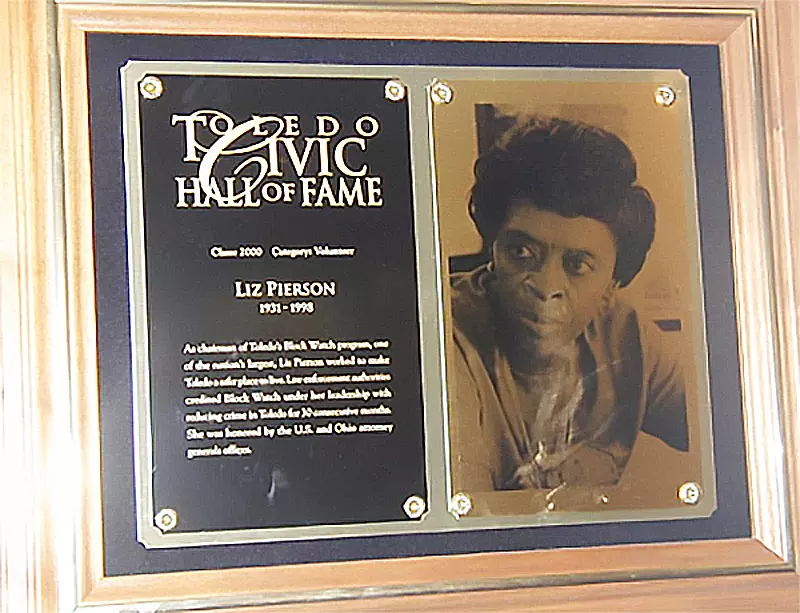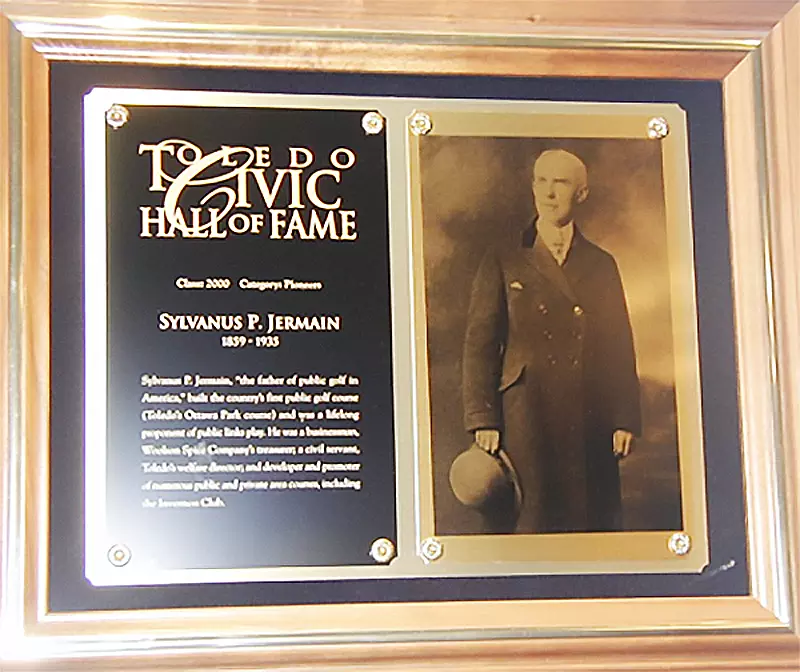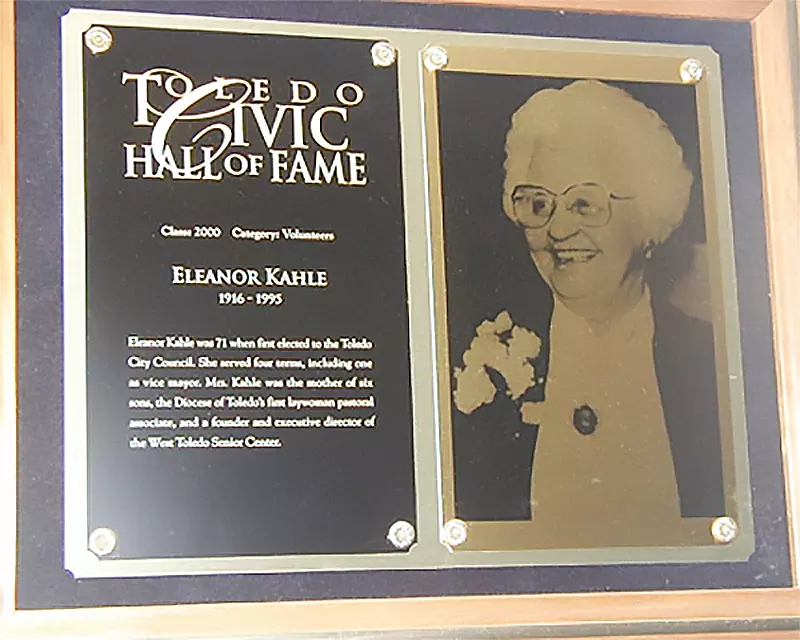2000 Inductees
Eleanor Kahle (1916-1995), Volunteer
Eleanor (Konieczka) Kahle came of age during the Depression and remained an admirer of Franklin D. Roosevelt's liberalism for her entire life. She graduated from Sylvania's Burnham High School and from Davis Business College. She also took classes from Lourdes College, the University of Toledo, and Mary Manse College. She raised six sons with her husband, "Skip" Kahle, who died in 1967. From 1971 to 1979, she was a pastoral associate for the Toledo Catholic Diocese, for which she won multiple service awards. At age 63 she helped form the West Toledo Senior Center on Hillcrest Avenue, and remained executive director from 1979 to 1993. Through her appointment to a commission to unite area churchwomen, she met City Councilman Peter Ujvagi and Marcy Kaptur. She was serving as a special assistant to Ms. Kaptur on senior citizen issues in 1983, when Mr. Ujvagi asked her to run for City Council. She repeatedly declined to run until 1987, when she was elected. In her three terms on City Council, she was a tireless advocate for the elderly and poor. She also served as vice-mayor for two years. She was active in Toledo's Sister Cities program, traveling to Szeged, Hungary, three times. She died after a brief illness and was often remembered by the sign in her Council office pronouncing "It is not enough to add new years to life. One must add new life to years".
Elizabeth (Liz) Pierson (1931-1998), Volunteer
 Elizabeth (Liz) Pierson (1931-1998)
Elizabeth (Liz) Pierson (1931-1998)
Born in Pittsburgh, Liz and her husband, Nathanial, came to Toledo in 1969 for her husband's construction job. She worked as an adult education leader until she slipped on some icy steps and broke her knee. Forced into early retirement, Pierson became more aware of the neighborhood surrounding her Palmwood Avenue house, including the alleged crack house down the street. She became a leader in Block Watch programs, putting in 60 to 80 hours per week and serving as president of the Block Watch Advisory Board. At her death, Toledo's Block Watch program was one of the country's largest, with more than 100,000 members and 100 groups in Toledo. Mayor Carty Finkbeiner credited the program with Toledo's 30-month decline in crime. She was personally thanked for her work by Attorney-General Janet Reno in 1997 in Washington D.C., during a three-day trip sponsored by The Blade. She was also awarded numerous awards. She is buried in Woodlawn Cemetery along with several other Toledo Civic Hall of Fame awardees.
Sylvanus Pierre Jermain (1859-1935), Pioneer
 Sylvanus Pierre Jermain (1859-1935)
Sylvanus Pierre Jermain (1859-1935)
"The Father of Public Golf in Toledo" was born in Adrian, Michigan and moved to Toledo with his family in 1871. His mother, a widow raising six children, became head librarian of the Toledo Public Library, and was active in civic affairs. Jermain's interest in public parks sprang from his struggle with asthma and his enthusiasm for the parks he saw while visiting New York City and Chicago. He watched impatiently in the 1880's as Toledo voters repeatedly voted against city park funding. He began installing at his own expense, benches and a bike path in a little stretch along Summit Street known as Riverside Park. Simultaneously, he began printing pamphlets and speaking publicly about the need to fund parks. As a successful businessman (he was treasurer of the Woolson Spice Company, and one of the founders of the Manufacturers' Association), he had the business community's ear. By 1891 he had the necessary 3,000 signatures to hold a bond issue for parks on the November ballet. The passage of this issue and the newly formed Board of Park Commissioners provided the funding and leadership resulting in Walbridge and Ottawa Parks. An avid golfer, Jermain lobbied for public courses, and in 1898 the first public golf course was established at Ottawa Park. Jermain Park was named in his honor in 1915.
Michael Owens (1859-1923), Pioneer
Michael was born in Mason County, West Virginia. At age ten he went to work in a glass factory to help support his large family and escape work in the coal mines. By age fifteen, he was a skilled glassblower, working twelve to fourteen hours a day. In his late twenties, he led a strike that shut down Edward D. Libbey's Cambridge, Massachusetts glass plant. When Libbey moved his operation to Toledo, where he thought business conditions were better, Owens followed. When Owens threatened to quit because of poor work habits at the plant, Libbey offered him the position of plant superintendent. Owens fired the entire crew and rehired those men he wanted. Production problems gradually ceased. Owens also oversaw a plant in Findlay and the Libbey exhibit at the 1893 Columbian Exhibition in Chicago. After Owens designed an automatic machine for blowing drinking glasses, Libbey formed the Toledo Glass Company in 1895. With Libbey's support, Owens continued to design numerous glass making tools that greatly enhanced production. In 1903 the Owens Bottle Machine Company was formed with Owens as general manager and Libbey as president. As the company became the world's largest producer of glass bottles, Owens became interested in Irving Colburn's attempts to manufacture sheet glass. Libbey bought the patent rights to Colburn's process and brought Colburn on board. Owens and Colburn tweaked the first flat-drawn sheet glass process into commercial use and formed the Libbey-Owens Sheet Glass Company in 1916. For the next six years Owens served as vice-president of the Owens-Bottle Company and the Libbey-Owens Sheet Glass Company. On December 27, 1923, he asked to be excused momentarily from a board meeting, fainted, and died fifteen minutes later. Owens Community College is named in his honor.
Harold Boeschenstein (1896-1972)
Born in Edwardsville, Illinois, 'Beck" went to the University of Illinois and served in the Army during World War I. He worked in various departments of the Illinois Glass Company beginning in 1921. When Owens Bottle Company and Illinois Glass Company merged to form the Owens-Illinois Glass Company in 1929, he came on as a vice president. He was named director of the new Owens-Corning Fiberglas Corporation in 1938 when it was formed and remained president for thirty years. Known as "Mr. Fiberglas", Boeschenstein oversaw tremendous growth in Fiberglas use. Annual sales of Owens-Corning Fiberglas grew from $3 million in 1939 to $274 million in 1963 under Boeschenstein's leadership. He earned the President's Medal for Merit in 1947 for serving as vice chairman of operations for the War Production Board from 1942-1945, allocating resource materials to war industries. He was president of the Toledo Museum of Art from 1967 to his death, and donated the two-story glass galleries to the museum. He served on numerous nonprofit boards and chaired fundraising campaigns for the Toledo Community Chest, local hospitals, and the Toledo Red Cross.
Jules D. Lippmann (1899-1974)
Born in the Bronx, Lippmann quit high school to work at Textileather Corporation. He rose from office boy to president and general manager in 1943. Lippmann moved to Toledo with Textileather in 1930. When General Tire & Rubber acquired Textileather in 1954, Lippmann continued his career managing the Textileather division and then the chemical plastics division. He retired in 1964, but continued consulting. He served on numerous boards including the Greater Toledo Community Chest, the University of Toledo, and Toledo Orchestra Association. He spearheaded the fund drive that created the Jewish Community Center. He was also honored by labor leaders for his achievements in labor-management relations.
Grove Hiram Patterson (1881-1956)
After growing up in Elyria, Ohio, and graduating from Oberlin College in 1905, Patterson worked for the Oberlin Tribune, Times-Herald of Lorain and the Cleveland Plain Dealer. He moved to Toledo in 1909 to work for the Toledo Times. After being fired from the Times, he became news editor of The Blade in 1910, and rose to managing editor in 1917. Known as "Mr. Blade" and "Mr. Toledo", he traveled extensively as a speaker, relaying his thoughts in his popular Blade column "The Way of the World". He resisted attempts from larger papers to lure him away, preferring to stay instead in his beloved Toledo. He served on numerous boards, and worked for the local and national YMCA. Grove Patterson School was named for him in 1951.
Melvin Pelfrey (1930-1989)
Raised in a small town along Lake Erie, Melvin longed to escape the boredom of school and small town life. He forged a birth certificate and took a job shoveling coal in a Great Lakes steamer, six weeks shy of his high school graduation. Married in 1951, he saw his wife, Shirley, once or twice during the nine month shipping season. Working his way up the ranks, he became aware of labor issues in the shipping industry. In 1956, Pelfrey took charge of a faltering strike called by the Marine Engineers Beneficial Association (MEBA), pitting the crews of 61 ships against owner U.S. Steel. Making eleventh hour phone calls to ship crews at six Great Lakes ports to tell them (falsely) that critical Duluth workers had struck, he prompted a successful strike. When MEBA was elected as the representing union, Pelfrey was elected head of MEBA's district two office. He became national vice president of the union in 1957. From its headquarters on One Maritime Plaza on Water Street, MEBA represented some 40,000 people when Pelfrey died suddenly from a heart attack in 1989. He is remembered for his knowledge of Great Lakes shipping, his fairness, and his commitment to trade workers.

